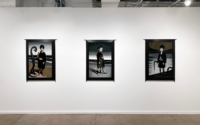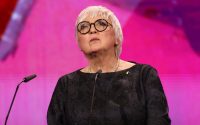Independent Report Finds Bührle Foundation’s Provenance Research “Not Sufficient”
An independent report recently found that provenance research done by the E. G. Bührle Foundation into its collection was “not sufficient” and the foundation’s published findings omitted information about the former Jewish owners of many works.
German Historical Museum president Raphael Gross authored the 165-page report and presented it on June 28 in Zurich. After critics accused the foundation of “white-washing” the provenance of items, the canton and city of Zurich, as well as the trustees of the Swiss art museum Kunsthaus commissioned the report.
The foundation’s namesake, Emil Georg Bührle, built his fortune selling weapons to Nazi Germany, as well as from forced labor in Nazi concentration camps and “welfare” Swiss institutions where women were forced to work. Bührle was also known to have purchased art looted by Nazi soldiers.
Gross’ research team investigated five works and found the stories of numerous Jewish collectors behind them were “hardly mentioned” in the provenance research of the Bührle Foundation, and “crucial milestones are overlooked”.
The five works were Vincent van Gogh’s Head of a Peasant Woman (1885), Willem Kalf’s Nautilus bowl (around 1600) a Paul Cezanne landscape from around 1879, Paul Gauguin’s The Street (1848), and Cézanne’s Madame Cézanne with a Fan (1879/1988).
“Without the Jewish collectors, the Bührle Collection would be a different one,” Gross said. “Or to put it another way: without persecution, the Bührle Collection would never have come into being.”
The report strongly recommended further provenance research and for the Kunsthaus to set up a committee of professionals to determine how to handle items in the collection lost or confiscated due to Nazi persecution.
Gross’ report also questioned whether the Swiss art museum should continue to explicitly name the collection after the German weapons manufacturer, which “dignifies his name and thus his entire collection” well as well as obscures “the fate of the Jewish previous owners persecuted by Nazism”.
“The question arises as to whether a public institution can resolve this with its moral and ethical stance,” Gross said.
According to The Art Newspaper, Bührle’s sale of anti-aircraft cannons to both the Allies and Nazi Germany was so successful, he became the richest man in Switzerland during the Second World War. In 2012, Bührle’s namesake foundation agreed to loan 205 works to Kunsthaus Zurich. These works were exhibited in a new $210 million building extension in 2021, sparking criticism. Artist Miriam Cahn also announced she would pull her works from the institution in response to the exhibition of the Bührle collection.
As a result of the controversy, Gross was commissioned to compile a report by the city and canton of Zurich and the Kunsthaus’ trustees in May. Out of the 205 items in the Bührle collection, Gross identified 62 as having previously belonged to Jewish owners during the Holocaust but had been mostly classified by the Bührle Foundation as “unproblematic” or having “no indication of problematic connections.” “Works with particularly incomplete provenance were classified as unproblematic,” the report said.
A press statement from the city and canton of Zurich and the Zurich Art Society said they expect to comment on the initial conclusions and announce next steps by mid-July. They also thanked Gross and his team of experts “for their comprehensive and very valuable work.”
In response to Gross’s report, the foundation’s board told The Art Newspaper it “will examine the report and comment on it in due course.”
On June 14, the E. G. Bührle Collection Foundation announced it was seeking “fair and just” solutions with the legal successors of the former owners for six works in its collection that were on display at the Kunsthaus Zurich. As a result, five of the paintings were removed from the Swiss museum on June 20.
The museum’s board of trustees reassessed the provenance of the six works following the publication of the new “Best Practices” for dealing with Nazi-looted art published by the US State Department in March 2024.
The “Best Practices” expanded on the Washington Principles which representatives of 44 nations and 13 nongovernmental organizations agreed to on December 3, 1998, after three days of meetings at the State Department’s Washington Conference on Holocaust-Era Assets.
The works in question were Gustave’s Courbet’s Portrait of the Sculptor Louis-Joseph (1863), an 1895 painting by Claude Monet of his garden in Giverny, Van Gogh’s The Old Tower (1884), Henri de Toulouse-Lautrec’s 1891 portrait of Georges-Henri Manuel and Paul Gauguin’s 1884 La route montante.
The news of the reassessment was first reported by The Art Newspaper.



